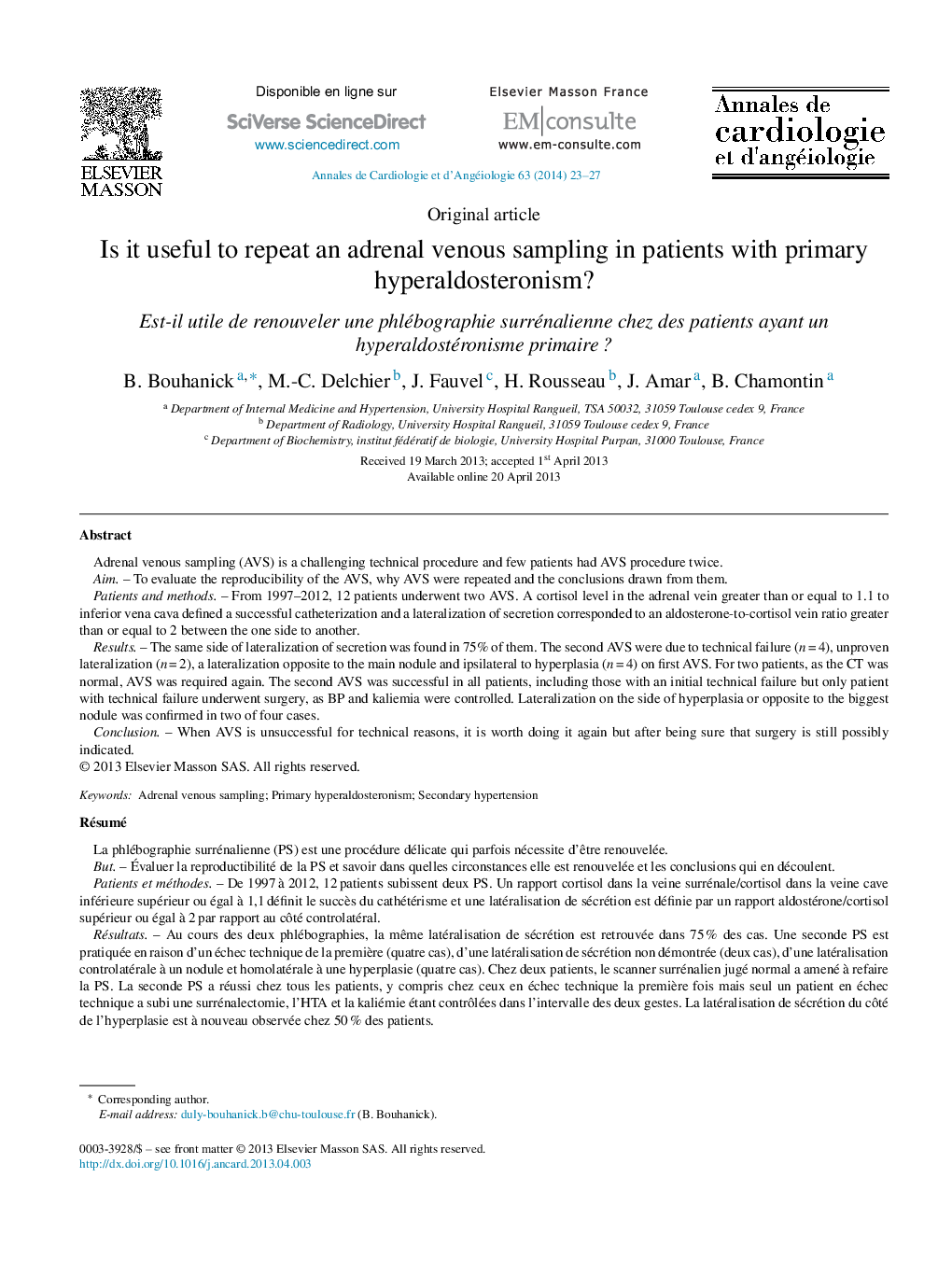| Article ID | Journal | Published Year | Pages | File Type |
|---|---|---|---|---|
| 2868752 | Annales de Cardiologie et d'Angéiologie | 2014 | 5 Pages |
Adrenal venous sampling (AVS) is a challenging technical procedure and few patients had AVS procedure twice.AimTo evaluate the reproducibility of the AVS, why AVS were repeated and the conclusions drawn from them.Patients and methodsFrom 1997–2012, 12 patients underwent two AVS. A cortisol level in the adrenal vein greater than or equal to 1.1 to inferior vena cava defined a successful catheterization and a lateralization of secretion corresponded to an aldosterone-to-cortisol vein ratio greater than or equal to 2 between the one side to another.ResultsThe same side of lateralization of secretion was found in 75% of them. The second AVS were due to technical failure (n = 4), unproven lateralization (n = 2), a lateralization opposite to the main nodule and ipsilateral to hyperplasia (n = 4) on first AVS. For two patients, as the CT was normal, AVS was required again. The second AVS was successful in all patients, including those with an initial technical failure but only patient with technical failure underwent surgery, as BP and kaliemia were controlled. Lateralization on the side of hyperplasia or opposite to the biggest nodule was confirmed in two of four cases.ConclusionWhen AVS is unsuccessful for technical reasons, it is worth doing it again but after being sure that surgery is still possibly indicated.
RésuméLa phlébographie surrénalienne (PS) est une procédure délicate qui parfois nécessite d’être renouvelée.ButÉvaluer la reproductibilité de la PS et savoir dans quelles circonstances elle est renouvelée et les conclusions qui en découlent.Patients et méthodesDe 1997 à 2012, 12 patients subissent deux PS. Un rapport cortisol dans la veine surrénale/cortisol dans la veine cave inférieure supérieur ou égal à 1,1 définit le succès du cathétérisme et une latéralisation de sécrétion est définie par un rapport aldostérone/cortisol supérieur ou égal à 2 par rapport au côté controlatéral.RésultatsAu cours des deux phlébographies, la même latéralisation de sécrétion est retrouvée dans 75 % des cas. Une seconde PS est pratiquée en raison d’un échec technique de la première (quatre cas), d’une latéralisation de sécrétion non démontrée (deux cas), d’une latéralisation controlatérale à un nodule et homolatérale à une hyperplasie (quatre cas). Chez deux patients, le scanner surrénalien jugé normal a amené à refaire la PS. La seconde PS a réussi chez tous les patients, y compris chez ceux en échec technique la première fois mais seul un patient en échec technique a subi une surrénalectomie, l’HTA et la kaliémie étant contrôlées dans l’intervalle des deux gestes. La latéralisation de sécrétion du côté de l’hyperplasie est à nouveau observée chez 50 % des patients.ConclusionEn cas d’échec technique d’une PS, il est utile de la renouveler mais à condition de s’assurer qu’une indication chirurgicale est maintenue.
